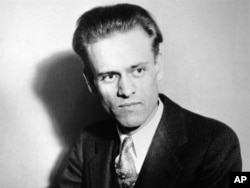Television has made it possible for people around the world to share in many different experiences – sports, music shows, films, and more.
Yet many people would find it difficult to name the inventor of the television. They might also be surprised to learn that the inventor came up with the idea when he was just fourteen years old.
Today, we explore the life of one of the great inventors of 20th century America: Philo Taylor Farnsworth.
A young boy
Philo Farnsworth was born in August 1906, near Indian Creek in the western state of Utah. The house he lived in for the first few years of his life had no electricity. But Philo read about electricity and quickly began to experiment with it.
One night, Philo read a magazine story about the idea of sending pictures and sound through the air. The story said some of the world’s best scientists were working on the idea. It said these scientists were using special machines to try to make a kind of device to send pictures.
Fourteen-year-old Philo decided these famous scientists were wrong. He decided that mechanical devices would never work.
Philo believed such a device would have to be electronic. Philo knew electrons could be made to move very fast. All he would have to do was find a way to make electrons do the work.
Soon, Philo had an idea for such a receiver. It would trap light in a container and send the light on a line of electrons. Philo called it “light in a bottle.”
Several days later, Philo told his teacher about a device that could capture pictures. He drew a plan for it and gave it to his teacher.
Philo’s drawing seemed very simple. But it still clearly showed the information needed to build a television.
Philo’s teacher was Justin Tolman. Many years later, Philo would credit Mr. Tolman with guiding his imagination and helping him open the doors of science.
Inventor
In September 1927, Philo turned on a device that was the first working television receiver. In another room was the first television camera. Philo had invented the special camera tube earlier that year.
While the image produced on the receiver was not very clear, the device worked. Within a few months, Philo had found several people who wanted to invest money in his invention.
In August 1930, the United States government gave Philo patent documents. These documents aimed to protect his invention from being copied by others.
Still, he became involved in legal disputes with a powerful company at the time known as RCA. Philo won the disputes but faced many business and financial difficulties in his life.
He developed more than 100 devices that helped make modern television possible. He also developed early radar, invented the first electronic microscope, and worked on developing peaceful uses of atomic energy.
Philo Farnsworth died in March of 1971. He is considered one of the most important inventors of the 20th century.
I’m John Russell.
Paul Thompson wrote this story for VOA Learning English. John Russell adapted it.











Forum